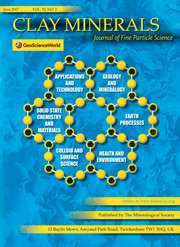No CrossRef data available.
Article contents
Preparatory Techniques
Published online by Cambridge University Press: 14 March 2018
Extract
In soil mechanics all of the preparatory techniques relating to clay soils have been standardised. Working in all other branches of science or technology, clay mineralogists have to uncover as best they can techniques from a widely scattered literature or learn from their “older” colleagues. In the present symposium we are to hear about some of the latest methods of preparing clays especially for X-ray and electron-optical study; yet I hope that when the Editor comes to publish these valuable contributions he will also find space to refer to some of the more humble methods of preparing clays; they do not appear to have been collected together before; we know them all by name—the Truog treatment, Mackenzie's method, or the Grim gambit—but where do we find them in printc?
“First catch your clay.” Undisturbed clay samples are regularly taken by engineers and by agricultural clay mineralogists. Moisture content, bulk density and rheological properties depend upon near-perfection in the taking of these samples in the field.
- Type
- Research Article
- Information
- Copyright
- Copyright © The Mineralogical Society of Great Britain and Ireland 1956


